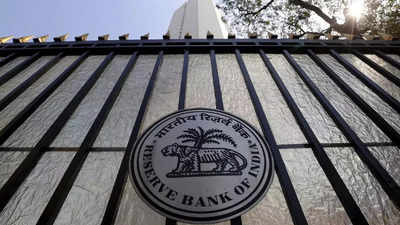The RBI released ‘Payments Vision 2025’ document which seeks a three-fold jump in the number of digital payments, increase in debit card usage and less cash in circulation.
The core theme of the vision documents is ‘E-Payments for Everyone, Everywhere, Everytime’ (4Es) with an overall objective to provide every user with safe, secure, fast, convenient, accessible and affordable e-payment options.
The document also talks about ring-fencing of domestic payment systems, including the need to mandate domestic processing of payment transactions, in view of the emerging geopolitical risks.
The activities to be taken up during the period up to 2025 as part of Vision 2025 are captured across five anchor goalposts of integrity, inclusion, innovation, institutionalisation and internationalisation, it said.
They cover 47 specific initiatives and 10 expected outcomes. Payments Vision 2025 builds on the initiatives of Payments Vision 2019-21.
As per the document, the expected outcomes include volume of cheque-based payments to be less than 0.25 per cent of the total retail payments and more than 3 times increase in number of digital payment transactions.
It expects UPI to register average annualised growth of 50 per cent and IMPS/ NEFT at 20 per cent, and increase in debit card transactions at PoS by 20 per cent.
It is also expected that debit card usage would surpass credit cards in terms of value, and card acceptance infrastructure would increase to 2.5 crore.
There would also be reduction in Cash in Circulation (CIC) as a percentage of GDP. National Electronic Funds Transfer (NEFT) system is available round the clock throughout the year and NEFT is presently operated in batches at half-hourly intervals throughout the day.
“To further reduce the settlement risk as also to improve efficiency by making the payments near-real time, the frequency of batches in NEFT shall be reviewed and increased,” the document said.
Its specific intiatives also include introduction of payee name look-up, a service for checking the beneficiary’s actual name for other funds transfer systems such as NEFT, Real Time Gross Settlement (RTGS) and Immediate Payment Service (IMPS).
Currently, only UPI has a facility for the payer to check and confirm the name of the account holder being paid before making the payment.
It further said that with the growing adoption of digital payment modes, there is a rise in digital payment frauds. Inspite of the efforts of stakeholders, recovery rate of defrauded amounts is not very encouraging.
Presently guidelines are in place for domestic storage of payments data. Banks and non-bank PSOs are allowed to process payment transactions abroad subject to certain conditions.
The feasibility of expanding RTGS to settle transactions in major trade currencies such as dollar, pound, and euro, too would be explored through bilateral or multilateral arrangements, it said.
CBDC has been gaining much traction with 86 per cent of the central banks globally reviewing its feasibility for cross-border transactions as well as for internal benefits. CBDC is also an area of interest for G20 under its priority initiative to enhance cross-border payments.
Over 26 crore digital payment transactions are processed daily by the payment systems, of which Unified Payments Interface (UPI) system itself processes more than two-thirds.
